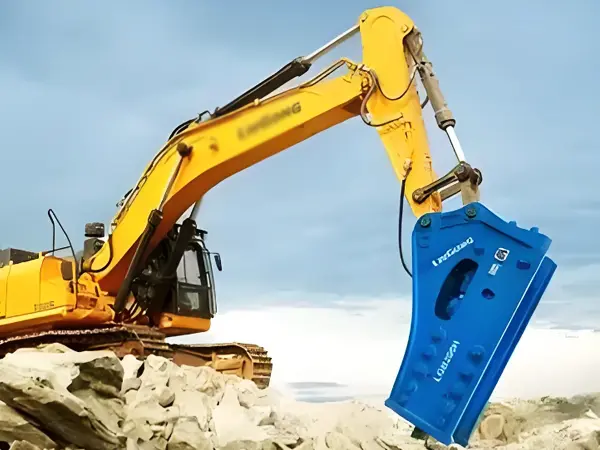The Essential Guide to Excavator Hydraulic Cylinders: Understanding Their Role and Functionality
Release time:
2025-06-26
Excavators are pivotal machines in the construction and engineering industries, primarily due to their ability to perform heavy lifting and digging tasks with precision. At the heart of an excavator's operational prowess lies the hydraulic cylinder, a crucial component that converts hydraulic energy into mechanical force. Understanding the function and importance of excavator hydraulic cylinders c
Excavators are pivotal machines in the construction and engineering industries, primarily due to their ability to perform heavy lifting and digging tasks with precision. At the heart of an excavator's operational prowess lies the hydraulic cylinder, a crucial component that converts hydraulic energy into mechanical force. Understanding the function and importance of excavator hydraulic cylinders can help operators and maintenance personnel ensure optimal performance and longevity of the machinery.
Hydraulic cylinders work by utilizing hydraulic fluid to create pressure, which in turn generates movement within the cylinder. In an excavator, these cylinders are responsible for moving the boom, arm, and bucket – the primary elements that allow for digging, lifting, and transporting materials. The hydraulic system in excavators typically consists of a pump, valves, and the hydraulic cylinders themselves. When the operator activates controls, the hydraulic fluid is directed to the appropriate cylinder, causing it to extend or retract based on the desired movement.
One of the key advantages of hydraulic cylinders in excavators is their ability to provide significant lifting power. They can lift and move heavy loads with ease, making them indispensable for tasks such as digging foundations, trenching, and site preparation. Furthermore, the precision offered by hydraulic cylinders allows operators to perform delicate tasks, such as placing materials accurately without causing damage to surrounding structures.
Maintaining excavator hydraulic cylinders is vital to ensure the reliability and efficiency of the machine. Regular inspections should be conducted to check for signs of wear, leaks, or damage. Common issues include cylinder seals wearing out, which can lead to hydraulic fluid leaks – a concern that can affect the machine’s performance and safety. Operators should also ensure that the hydraulic fluid levels are maintained and that the fluid is clean, as dirt and contaminants can cause premature wear and system failures.
In addition to routine maintenance, understanding the specifications and limits of hydraulic cylinders is important. Each cylinder has a specific load rating, and exceeding these limits can lead to cylinder failure or other mechanical issues. Operators should be trained to recognize the signs of potential problems and respond appropriately to prevent damage.
In conclusion, excavator hydraulic cylinders play a vital role in the functionality and effectiveness of excavators in the construction and engineering industries. By understanding their operation, maintaining them properly, and recognizing their significance, operators can enhance the efficiency and productivity of their machinery, leading to successful project outcomes.
Hydraulic cylinders work by utilizing hydraulic fluid to create pressure, which in turn generates movement within the cylinder. In an excavator, these cylinders are responsible for moving the boom, arm, and bucket – the primary elements that allow for digging, lifting, and transporting materials. The hydraulic system in excavators typically consists of a pump, valves, and the hydraulic cylinders themselves. When the operator activates controls, the hydraulic fluid is directed to the appropriate cylinder, causing it to extend or retract based on the desired movement.
One of the key advantages of hydraulic cylinders in excavators is their ability to provide significant lifting power. They can lift and move heavy loads with ease, making them indispensable for tasks such as digging foundations, trenching, and site preparation. Furthermore, the precision offered by hydraulic cylinders allows operators to perform delicate tasks, such as placing materials accurately without causing damage to surrounding structures.
Maintaining excavator hydraulic cylinders is vital to ensure the reliability and efficiency of the machine. Regular inspections should be conducted to check for signs of wear, leaks, or damage. Common issues include cylinder seals wearing out, which can lead to hydraulic fluid leaks – a concern that can affect the machine’s performance and safety. Operators should also ensure that the hydraulic fluid levels are maintained and that the fluid is clean, as dirt and contaminants can cause premature wear and system failures.
In addition to routine maintenance, understanding the specifications and limits of hydraulic cylinders is important. Each cylinder has a specific load rating, and exceeding these limits can lead to cylinder failure or other mechanical issues. Operators should be trained to recognize the signs of potential problems and respond appropriately to prevent damage.
In conclusion, excavator hydraulic cylinders play a vital role in the functionality and effectiveness of excavators in the construction and engineering industries. By understanding their operation, maintaining them properly, and recognizing their significance, operators can enhance the efficiency and productivity of their machinery, leading to successful project outcomes.





